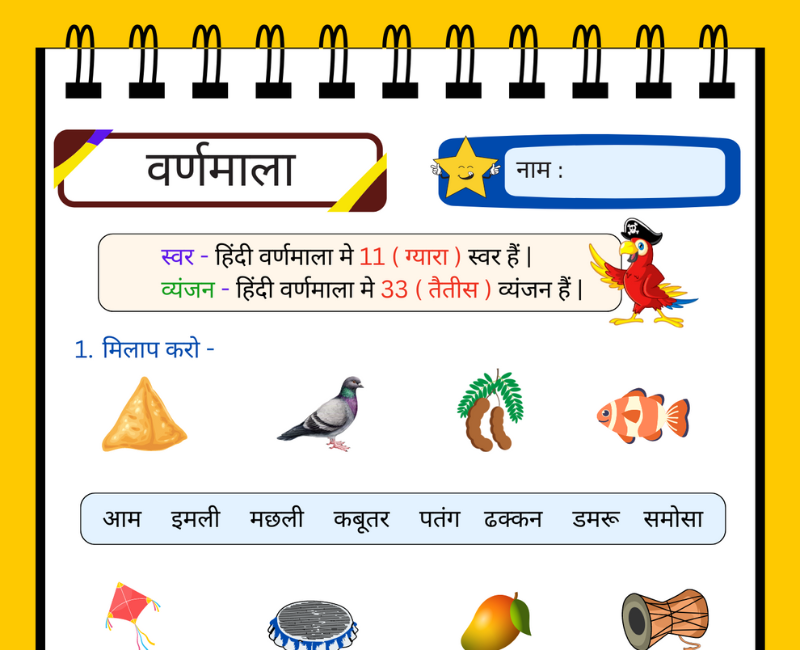How Content Creators Can Make Money Online: A Comprehensive Guide

Introduction to Making Money Online as a Content Creator
The digital landscape has undergone a remarkable transformation over the past decade, offering unprecedented opportunities for individuals to monetize their creativity and skills. The rise of digital platforms such as YouTube, Instagram, TikTok, and various blogging sites has paved the way for a new breed of professionals: content creators. These platforms provide a global stage for creators to showcase their talents, connect with audiences, and, crucially, generate income.
The demand for online content continues to surge, fueled by an ever-increasing number of internet users seeking entertainment, education, and information. This growing appetite for digital content has created a fertile ground for content creators to thrive. Whether it’s through video production, blogging, podcasting, or social media engagement, the opportunities to reach and engage with a broad audience are virtually limitless.
Furthermore, the shift towards remote work and the gig economy has made content creation an attractive career option for many. Individuals are increasingly drawn to the flexibility and autonomy that content creation offers. Unlike traditional employment, content creators can set their own schedules, choose their niches, and build their brand identity. The prospect of turning a passion into a profitable venture is a compelling reason why more people are embracing content creation as a viable career path.
As digital platforms continue to evolve and introduce new monetization tools, the potential for content creators to make money online grows exponentially. From ad revenue and sponsorships to direct fan support through memberships and merchandise sales, the avenues for income generation are diverse and continually expanding. This comprehensive guide aims to explore these avenues in detail, providing content creators with the insights and strategies needed to succeed in the digital economy.
Monetizing Your Content on Social Media Platforms
Leveraging social media platforms is a highly effective way for content creators to monetize their work. Each platform offers unique opportunities, from ad revenue to sponsored posts, brand partnerships, and affiliate marketing. By understanding the nuances of each platform, creators can maximize their earnings and sustain their online presence.
On YouTube, the primary method of monetization is through ad revenue. Creators can earn money through the YouTube Partner Program by allowing ads to be displayed on their videos. The revenue is typically calculated based on the number of views and interactions with the ads. Additionally, YouTube offers channel memberships and Super Chat, enabling viewers to financially support their favorite creators directly.
Instagram is another powerful platform for monetization, primarily through sponsored posts and brand partnerships. Creators with a substantial following can collaborate with brands to promote products or services, often receiving compensation in the form of money or free products. Instagram’s “Swipe Up” feature in Stories can also be utilized for affiliate marketing, directing followers to purchase links where the creator earns a commission.
TikTok has rapidly become a monetization hub, especially with its Creator Fund. By joining the fund, creators are compensated based on the performance of their videos. Sponsored content and brand partnerships are also prevalent on TikTok, where creators can earn significant income by creating engaging, branded content. Moreover, TikTok’s integration with e-commerce platforms allows for seamless affiliate marketing opportunities.
Facebook offers multiple monetization avenues, including ad breaks in videos for creators who meet specific criteria. This platform also supports fan subscriptions, where followers pay a monthly fee for exclusive content. Brand partnerships and affiliate marketing remain effective strategies on Facebook as well, providing creators with diverse income streams.
Several content creators have successfully monetized their social media presence. For instance, YouTuber Marques Brownlee, known for his tech reviews, generates significant ad revenue and engages in lucrative brand partnerships. On Instagram, fashion influencer Chiara Ferragni has built a multi-million-dollar empire through sponsored content and brand collaborations. TikTok star Charli D’Amelio leverages the platform’s Creator Fund and numerous brand deals to monetize her content extensively.
Understanding and utilizing these monetization strategies can significantly enhance a content creator’s ability to earn a sustainable income, ensuring long-term success in the competitive digital landscape.
Creating and Selling Digital Products
In today’s digital age, content creators have a plethora of opportunities to monetize their skills and expertise by creating and selling digital products. These products can range from eBooks and online courses to webinars and digital art, each catering to different audiences and interests. Understanding the nuances of developing high-quality digital products and effectively marketing them can significantly enhance a creator’s revenue stream.
eBooks are a popular choice for content creators, especially those with a knack for writing. They provide a platform to share knowledge, tell stories, or offer instructional guides. To create a compelling eBook, focus on delivering valuable content, maintaining a clear structure, and incorporating engaging visuals. Tools like Canva and Adobe InDesign can assist in designing a professional-looking eBook. Platforms such as Amazon Kindle Direct Publishing and Gumroad can be used to distribute and sell eBooks.
Online courses are another lucrative digital product. They allow content creators to share their expertise in a structured format, appealing to those eager to learn new skills. When developing an online course, ensure the content is comprehensive and well-organized. Including multimedia elements like videos, quizzes, and interactive assignments can enhance the learning experience. Platforms like Teachable, Udemy, and Coursera offer creators robust tools to build, market, and sell their courses.
Webinars provide a more interactive experience, allowing creators to engage with their audience in real-time. These can be one-time events or part of a series, covering various topics of interest. High-quality webinars require thorough planning, engaging presentation materials, and effective promotion. Tools like Zoom, WebinarJam, and GoToWebinar can facilitate the hosting and management of webinars.
For visual artists, digital art is an excellent way to monetize creativity. This includes illustrations, graphic designs, and photography. Creating a portfolio of high-quality digital art and leveraging social media for promotion can attract potential buyers. Platforms like Etsy, Redbubble, and Society6 enable artists to sell their digital creations to a global audience.
Regardless of the type of digital product, effective marketing is crucial. Utilize social media, email newsletters, and collaborations with other creators to reach a broader audience. Offering limited-time discounts or free previews can also entice potential buyers. By leveraging platforms like Etsy, Gumroad, and Teachable, content creators can streamline the process of selling their digital products, ultimately maximizing their online earning potential.
Utilizing Subscription-Based Models and Memberships
In the evolving landscape of digital content creation, the subscription-based model has emerged as a robust mechanism for generating a steady income. This model allows content creators to offer exclusive content and benefits to a dedicated audience willing to pay for enhanced access. By leveraging platforms such as Patreon, OnlyFans, and Substack, creators can build a loyal community that supports their work on a recurring basis.
Patreon is a prominent platform that enables creators to offer tiered membership levels, each providing unique perks. These can range from early access to content, behind-the-scenes footage, personalized interactions, and more. The key to success on Patreon lies in understanding your audience and delivering value that meets their expectations. Regular updates and transparent communication are crucial in retaining subscribers and encouraging higher-tier memberships.
OnlyFans, known primarily for its adult content, has expanded to include creators from various niches, such as fitness, cooking, music, and more. This platform allows creators to monetize their content directly by charging a subscription fee. By offering exclusive content, live streams, and direct messaging, creators can forge a closer connection with their audience, fostering a sense of community and loyalty.
Substack caters primarily to writers and journalists, providing a platform to publish newsletters directly to their subscribers. Unlike traditional blogging platforms, Substack allows creators to monetize their writing by offering paid subscriptions. This model has proven successful for writers who can deliver high-quality, niche content that readers are willing to pay for. The ability to have direct communication with subscribers through emails enhances engagement and retention.
Building a loyal audience willing to pay for exclusive content requires a strategic approach. Content creators need to consistently produce high-quality material, engage with their audience, and offer tangible benefits. Transparency and regular updates keep subscribers informed and satisfied, reducing churn rates. By effectively utilizing subscription-based models and memberships, content creators can achieve financial stability and focus on delivering value to their dedicated supporters.
Leveraging Affiliate Marketing
Affiliate marketing stands as a powerful avenue for content creators to monetize their online presence. This marketing model enables creators to earn commissions by promoting products or services and driving sales through their content. To effectively leverage affiliate marketing, content creators need to start by choosing the right affiliate programs. It is essential to select programs that align closely with their niche and audience interests. Popular platforms like Amazon Associates, ShareASale, and CJ Affiliate offer a broad range of products and services for various niches.
Once the appropriate affiliate programs are selected, the next step is to create engaging content that drives conversions. Content creators should focus on producing high-quality, informative, and persuasive content that naturally incorporates affiliate links. This can be achieved through product reviews, tutorials, comparison articles, and listicles. For example, a tech blogger might write a detailed review of the latest smartphone, including affiliate links to purchase the device. Visual content, such as videos and infographics, can also enhance engagement and improve conversion rates.
Tracking performance is a critical aspect of successful affiliate marketing. Content creators should use analytics tools to monitor the performance of their affiliate links and identify which content drives the most conversions. This data can help optimize future content strategies and improve overall revenue. Tools like Google Analytics, along with proprietary dashboards provided by affiliate programs, can offer valuable insights into traffic sources, click-through rates, and conversion rates.
Examining successful affiliate marketing campaigns can provide inspiration and practical insights. For instance, Pat Flynn of Smart Passive Income has built a six-figure income through strategic affiliate marketing. His success stems from creating valuable content that genuinely helps his audience, thereby fostering trust and encouraging purchases through his affiliate links. Similarly, fashion influencers often achieve significant earnings by promoting clothing brands and styling tips through their blogs and social media channels.
By thoughtfully selecting affiliate programs, creating engaging content, and rigorously tracking performance, content creators can effectively leverage affiliate marketing to generate a steady stream of income.
Building and Monetizing a Personal Brand
Establishing a strong personal brand is essential for content creators aiming to make money online. A well-defined brand not only differentiates you from the competition but also creates a recognizable identity that can attract a loyal audience and lucrative monetization opportunities. The first step in building a personal brand is to create a unique identity. This involves understanding your niche, identifying your target audience, and crafting a consistent visual and verbal style that resonates with them. Your brand should reflect your values, expertise, and personality, making it easier for your audience to connect with you on a deeper level.
Engaging with your audience is another critical component of personal branding. Regular interaction through comments, direct messages, and live sessions can foster a sense of community and trust. Responding to feedback and showing genuine interest in your audience’s opinions can further strengthen this bond. Additionally, creating content that is valuable, informative, and entertaining will keep your audience engaged and coming back for more. Leveraging social media platforms to share behind-the-scenes content, personal stories, and updates can also help humanize your brand and make it more relatable.
Monetization opportunities often arise from a strong personal brand. One effective strategy is to leverage brand partnerships and sponsorships. Companies are constantly looking for influencers who align with their brand values and can authentically promote their products or services. By collaborating with these companies, you can negotiate deals that benefit both parties. Sponsored content, affiliate marketing, and brand ambassadorships are common forms of such collaborations. It’s crucial to choose partnerships that align with your brand and provide value to your audience, ensuring authenticity and trust are maintained.
In conclusion, building and monetizing a personal brand requires a strategic approach. By creating a unique identity, engaging with your audience, and leveraging brand partnerships, content creators can establish a strong brand that opens up various monetization opportunities. A well-crafted personal brand not only enhances your online presence but also paves the way for sustainable income streams.
Exploring Freelance Opportunities
Content creators looking to monetize their skills can explore a myriad of freelance opportunities available online. Platforms like Fiverr, Upwork, and Freelancer serve as pivotal marketplaces where creators can connect with clients seeking specific services. These platforms offer a diverse range of categories, allowing creators to market their expertise in areas such as writing, graphic design, video editing, and more.
To start, it’s essential to create a compelling profile that highlights your skills and experience. A detailed profile with a professional photo, a well-written bio, and examples of previous work can significantly enhance your chances of attracting potential clients. On platforms like Upwork, take advantage of the proposal system by crafting personalized pitches that address the specific needs of each job posting. This tailored approach demonstrates your commitment and understanding of the project, making you a more attractive candidate.
Setting competitive rates is another critical aspect of freelancing. Research the market rates for your particular skill set and adjust your pricing accordingly. Initially, you might consider setting lower rates to build a portfolio and gain client testimonials. Over time, as you accumulate positive reviews and a robust portfolio, you can gradually increase your rates to reflect your growing expertise and demand.
Building a portfolio is crucial for showcasing your talents and attracting clients. Include a variety of samples that demonstrate your versatility and proficiency in different styles or types of work. For instance, a writer might include blog posts, articles, and copywriting samples, while a graphic designer could display logos, brochures, and social media graphics. A video editor might showcase a range of editing styles, from corporate videos to creative projects.
In addition to the commonly known platforms, consider exploring niche-specific sites that cater to your particular skill set. For example, writers might find opportunities on ProBlogger or Contena, while designers can explore 99designs or DesignCrowd. These niche platforms often have a more targeted audience, which can lead to higher quality job postings and clients who are specifically looking for your expertise.
Tips for Sustainable Income and Growth
For content creators aiming to establish a sustainable income and foster growth, diversifying income streams is crucial. Relying solely on one platform or type of revenue can be risky. By exploring various avenues such as brand partnerships, merchandise sales, sponsored content, and membership subscriptions, creators can build a more resilient financial foundation. Additionally, considering affiliate marketing and offering exclusive content through platforms like Patreon can further bolster earnings.
Staying abreast of industry trends is another key strategy. The digital landscape evolves rapidly, and content creators must adapt to remain relevant. Regularly consuming industry news, attending webinars, and participating in relevant forums can provide valuable insights. Leveraging new platforms and technologies, such as live streaming or virtual reality, can also offer fresh opportunities for engagement and monetization.
Continuous skill improvement cannot be overstated. Whether it’s enhancing video editing techniques, mastering new software, or honing public speaking abilities, ongoing education is vital. Many creators invest in online courses, workshops, and certifications to stay competitive. This dedication to professional development not only improves content quality but also expands the potential for income generation.
Maintaining a healthy work-life balance is essential for long-term success. The pressure to produce content consistently can lead to burnout if not managed properly. Setting boundaries, scheduling regular breaks, and prioritizing self-care can help sustain creativity and productivity. Remember, a well-rested mind is more capable of generating innovative ideas and maintaining audience engagement.
Networking and collaboration with other creators can significantly enhance growth prospects. Building relationships within the creator community can lead to collaborative projects, cross-promotions, and shared audiences. Attending industry events, joining creator groups, and participating in online discussions can facilitate these connections. Networking not only opens doors to new opportunities but also provides a support system of like-minded individuals.
By implementing these strategies, content creators can ensure a more stable and growth-oriented career. Diversifying income, staying updated with trends, continuously improving skills, maintaining a work-life balance, and networking are all pivotal elements to achieving long-term success in the digital content creation industry.












